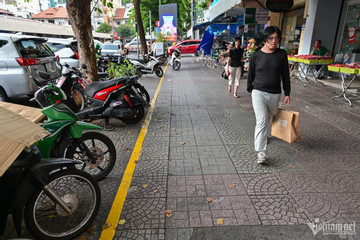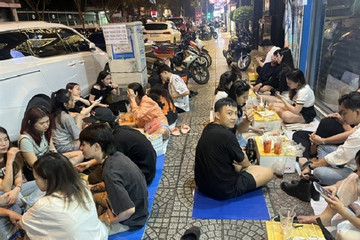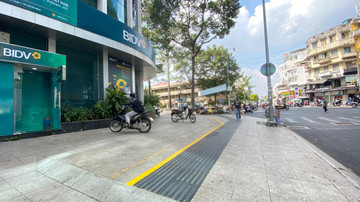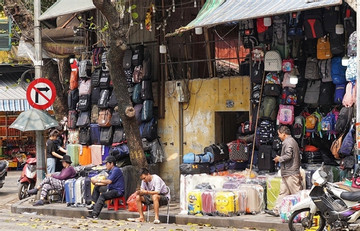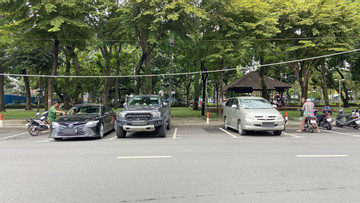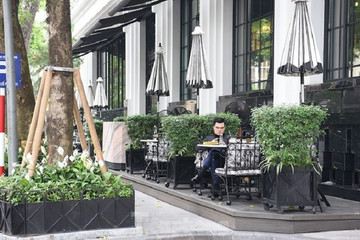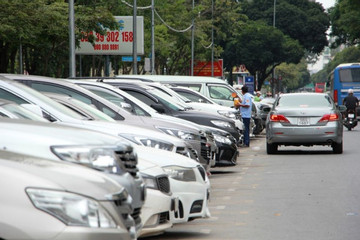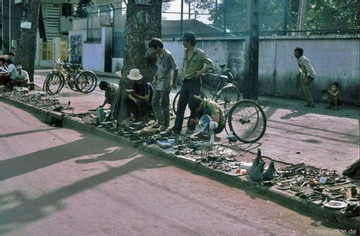- © Copyright of Vietnamnet Global.
- Tel: 024 3772 7988 Fax: (024) 37722734
- Email: evnn@vietnamnet.vn
sidewalk economy
Update news sidewalk economy
HCM City rethinks sidewalk use regulation, plans digital management system
The city government is considering canceling Decision 32 and introducing a modern system to better manage sidewalk and roadway usage.
Sidewalk economy: Hanoi designates 273 streets for business and parking
Authorities have identified 273 streets where sidewalks can be temporarily used for commerce and parking, aiming to boost economic activity while maintaining urban order.
HCM City extends sidewalk rental initiative to boost urban order and business
District 1 has expanded its sidewalk rental program to 52 streets, aiming to improve urban order and provide business opportunities, following a successful pilot phase.
HCM City implements sidewalk leasing fees, initiates massive tree replacement
In a recent press conference, Ho Chi Minh City officials announced the implementation of sidewalk leasing fees amounting to VND 2 billion and the replacement of thousands of green trees to address safety concerns.
Pilot sidewalk usage fee collection proposed in Hoàn Kiếm District
The proposal came after assessing the current management status at 123 local streets in the city.
HCM City initiates leasing sidewalks, streets in District 1
District 1 in HCM City on Thursday began a trial programme for renting out sections of sidewalks for various purposes such as parking and other businesses on eleven streets.
Central business districts in HCM City to lease pavements on 100 streets
Districts 1, 10 and 11 in HCM City have updated a list of 100 streets that meet requirements to rent parts of the street pavements for business purposes.
HCM City proposes commercial rental on over 100 streets with spacious sidewalks
Districts in HCM City have proposed a list of over 100 streets with sidewalks wider than three metres for commercial rental to the municipal Department of Transport
HCM City postpones sidewalk use fee collection
HCM City has halted its plan to collect fees on sidewalk and roadside usage due to regulatory hindrances.
Sidewalk rental is not just to collect fees
Hoàn Kiếm District, the city’s central area, proposed rental on ten streets at 36 locations, including 15 locations on five pedestrians streets of Đinh Tiên Hoàng, Hàng Khay, Hàng Bài, Nguyễn Xí and Lê Thái Tổ.
HCMC prepares to lease sidewalks on nearly 900 roads
The HCMC Department of Transport has listed nearly 900 roads across the city that will serve as a basis for district authorities to lease sidewalks.
Hanoi plans to lease out street pavements next year | DTiNews
Hanoi authorities are considering plans to collect fees on pavement and road usage from January next year.
HCMC to begin sidewalk-use fee collection early next year
HCMC is set to collect fees for roadside and sidewalk usage from early next year as reported by local media.
HCM City to collect VND 1.55 trillion a year from street space rental
HCM City Department of Transport has just proposed a detailed plan on the use of road and pavements for commercial purposes, which could bring in an estimated annual revenue of VND 1.55 trillion (USD63.48 million).
Hanoi's decade-long effort to clear pavements with no significant results
Despite efforts for 10 years, Hanoi's pavements are still cluttered and have not been returned to pedestrians.
Old Saigon streets seen through the lens of a German photographer
"On the sidewalks, you will see countless street stalls, eateries, bike repair shops," German photographer Hans-Peter Grumpe said about HCM City in the early 1990s.
Hanoi to 'give pavements back to pedestrians'
The pavements in Hanoi’s old residential quarter have been occupied by petty merchants and used as parking lots and retail premises for many years. As a result, pedestrians have to walk on the roadbeds.
HCM City considers renting sidewalk spaces to petty merchants
A project on leasing sidewalk space is being considered by the HCM City Department of Transport as a possible solution to ensure an "urban civilization" and reduce the negative impact on people and traffic.
Commercial sidewalk use may be charged by HCMC authorities
HCMC is planning to allow the paid use of sidewalks for commercial purposes such as vending goods or parking if these business activities leave a space of at least 1.5 meters wide for pedestrians.
Saigon with the sidewalk economy
VietNamNet Bridge – Being considered as the "promised land," Ho Chi Minh City is also facing many difficulties and complicated problems that come from the informal workers.






